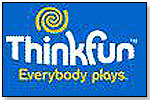
December 31, 2025


| “Even if your item will eventually pass, it may fail at first.” — Karen Hirshbien, Kidz Toyz |
 Kidz Toyz Inc. was forced to “choose which products are worth testing for the price,” according to the company’s Karen Hirshbien, and ended up eliminating three or four items from its line.
Kidz Toyz Inc. was forced to “choose which products are worth testing for the price,” according to the company’s Karen Hirshbien, and ended up eliminating three or four items from its line. Although Andrea Barthello, vice president of Thinkfun, believes the “[Toy Industry Association] has been very proactive in working with the CPSC,” she also thinks regulations “have become more complicated than they might end up being. Engle suggested discrepancies in interpretation: “You could read it one way; I could read it a different way,” he said of the law.
Although Andrea Barthello, vice president of Thinkfun, believes the “[Toy Industry Association] has been very proactive in working with the CPSC,” she also thinks regulations “have become more complicated than they might end up being. Engle suggested discrepancies in interpretation: “You could read it one way; I could read it a different way,” he said of the law. Little Kids and Educational Insights have each hired an individual to oversee and ensure fulfillment of the new requirements.
Little Kids and Educational Insights have each hired an individual to oversee and ensure fulfillment of the new requirements.
Copyright © 2025 TDmonthly®, a division of TOYDIRECTORY.com®,
Inc.